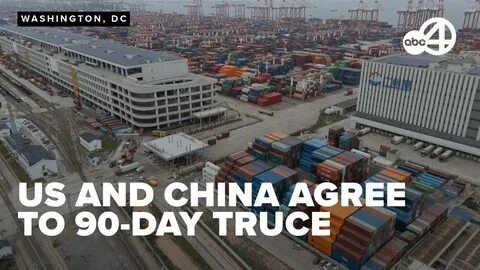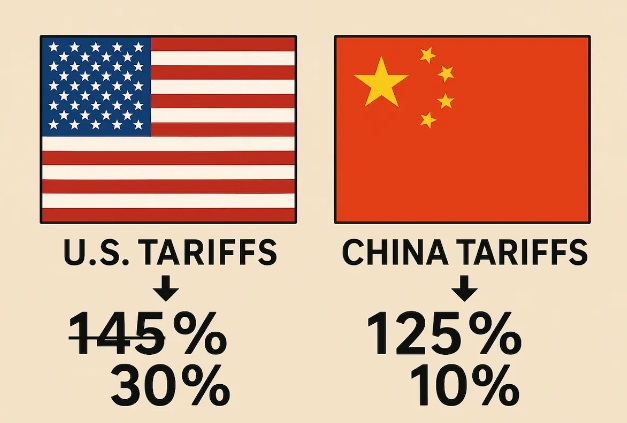
The US and China will temporarily lower tariffs on each other's products, with the US reducing its levies from 145% to 30% and China dropping its duties from 125% to 10%.
The move is seen as a significant de-escalation of trade tensions, with stocks, the dollar, and oil prices rising, and China committing to suspend or cancel its non-tariff countermeasures imposed on the US, notes Bloomberg.
The US and China will temporarily lower tariffs on each other’s products in a dramatic ratcheting down of trade tensions that buys the world’s two largest economies three months to work toward a broader agreement.
The combined 145% US levies on most Chinese imports will be reduced to 30% including the rate tied to fentanyl by May 14, while the 125% Chinese duties on US goods will drop to 10%, according to a joint statement and from officials in a briefing Monday in Geneva.

“Both sides agree we do not want a generalized decoupling,” Treasury Secretary Scott Bessent said in a Bloomberg Television interview Monday. “The US is going to do a strategic decoupling in terms of the items that we discovered during Covid were of national security interests — whether it’s semiconductors, medicine, steel,” he said.
Bessent’s overtures to ease trade tensions with China come less than six weeks after President Donald Trump’s “Liberation Day” announcement April 2 of so-called reciprocal tariffs on dozens of countries. The retaliation that followed took duties to levels that for many companies effectively blocked trade and caused widespread uncertainty that could be sustained if talks don’t keep progressing.
Bessent said it’s “implausible” that reciprocal tariffs on China go below 10%, but the April 2 level — set by President at 34% — “would be a ceiling.” He also said that “we could see some amount of the fentanyl tariffs perhaps come off,” if there were “excellent engagement” from Beijing on solutions toward solving that crisis. Trump put a 20% surtax on China earlier this year over fentanyl concerns.
Speaking to reporters earlier in Geneva, the Treasury chief said, “We expect that as the negotiations proceed, that there will also be the possibility of purchase agreements to pull what is our largest bilateral trade deficit into balance.”
Bessent added that the tariff reductions don’t apply to sectoral duties imposed on all US trading partners, and the tariffs applied on China during the first Trump administration remain in place. Asked what would happen at the end of 90 days to avoid tariffs ratcheting back up, Bessent indicated there’s a chance to extend the truce further.
China also said it would suspend or cancel its non-tariff countermeasures imposed on the US since April 2. That’s an apparent reference to China’s addition on April 4 of seven rare earths to its export control list. Securing the removal of those restrictions was a priority for Washington as a range of industries faced disruption.
China has always handled relations with the US based on the principles of mutual respect, the official Xinhua News Agency reported, citing a white paper on national security. China is committed to the stable development of relations with the US, it said, and imposing pressure and threats are not the right way to deal with China.
“The agreement, which significantly lowers tariffs without any concessions, is likely to be viewed as a particular victory for China,” Lynn Song, ING’s chief economist for greater China, wrote in a research note.
The de-escalation comes after recent data showed a slump in trade across the Pacific Ocean. The two countries had earlier reported “substantial progress” in talks, which buoyed markets and helped Chinese stocks recoup their losses since Trump’s “Liberation Day” announcement of tariffs on April 2.
read more in our Telegram-channel https://t.me/The_International_Affairs

 11:45 13.05.2025 •
11:45 13.05.2025 •






















